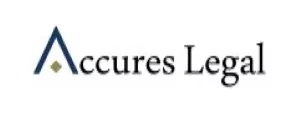The protection of Graphic User Interfaces (GUIs) in India raises the question of whether copyright or design protection is the more appropriate choice. While there is some ambiguity in the legal landscape, recent developments and case law shed light on the subject.
Graphic User Interfaces (GUIs) encompass a range of visual elements such as colours, blocks, and patterns that are combined to create icons, menus, pointers, bars, and screen displays. These visual components enhance the visual appeal of the device on which they are implemented. The use of GUIs is constantly evolving, and their incorporation often enhances the commercial value of products due to their aesthetic appeal. Consequently, GUI developers seek intellectual property protection to safeguard their creations. When the term GUI is mentioned, one may immediately associate it with design protection, given its emphasis on aesthetics rather than functionality. However, in reality, there exist uncertainties regarding the appropriate type of intellectual property protection available for GUIs.
In developed countries such as the United States, Japan, South Korea, and the European Union, the importance of protecting GUIs has been recognized, leading to an increase in the registration of design rights specifically for GUIs. Design registrations offer a more suitable form of protection for GUIs compared to copyright registrations, considering their emphasis on the visual and aesthetic elements. In the United States, GUIs can be protected under design patents, which safeguard the ornamental features of a design, including the visual aspects of GUIs. Similarly, countries like Japan, South Korea, and the European Union have provisions in their respective design laws that allow for the registration and protection of GUI designs. However, in India, the legal landscape concerning the protection of GUIs under the Designs Act is still evolving. The existing provisions and precedents in India's intellectual property laws do not provide clear and definitive guidance on the protection of GUIs. This lack of clarity poses challenges for GUI developers and companies seeking adequate protection for their creations.
The ambiguity surrounding the protection of GUIs in India necessitates a re-examination of the existing laws and regulations. There is a growing need to address this gap in intellectual property protection to encourage innovation in GUI design and provide a level playing field for developers and businesses operating in India.
Efforts are underway to revisit the laws and regulations related to the protection of GUIs in India. This involves considering the unique characteristics and challenges posed by GUIs and exploring suitable mechanisms for their effective protection. Stakeholders, including legal experts, industry professionals, and policymakers, are actively engaged in discussions to shape a comprehensive framework that caters to the evolving needs of GUI developers and promotes innovation in the Indian market.
By refining and elaborating on the existing legal provisions and establishing clear guidelines for the protection of GUIs, India can create a conducive environment for GUI design innovation, enhance its competitiveness in the global market, and provide the necessary legal certainty and protection for GUI developers and businesses. There is a well-settled position that GUIs can receive copyright protection. The Bombay High Court has affirmed that copyright protection, which applies to "computer programs," extends to the program structure and design features. This interpretation recognizes the creative and expressive aspects of GUIs, making copyright protection a viable option (Maraekat Infotech Ltd. v. Naylesh V Kothari, 2016 SCC OnLine Bom 2369)
On the other hand, The Designs Act, 2000 defines "design" as including "the features of shape, configuration, pattern, ornament, or composition of lines or colors, and must be applied to an article of manufacture, whether in 2 or 3 dimensions."In this context, Microsoft was granted registration under the Act prior to 2009 for some of its designs under class 14-99 (miscellaneous category). In 2008, to comply with the Locarno Classification, the Design Rules 2001 were amended, whereby class 14-04 was introduced, dedicated to screen displays and icons. However, the Indian Design Office, refused the design registration sought by Amazon (Application no. 240305) on a "Graphic user interface for providing supplemental information of a digital work to a display screen." Some of the reasons cited were that it does not fall under the category of design under the Act, it does not qualify as a finished article manufactured by an industrial process, a GUI is essentially a function of a computer screen which is visible only when the computer is turned on, and it cannot be physically accessed or sold separately as a commodity.
Recently, the Design (Amendment) Rules 2019, were adopted to harmonize with the Locarno classification and introduced Class 32, which protects graphic symbols and logos, surface patterns, and ornamentation. This provision leaves room for re-interpretation of provisions regarding restorability of GUIs under the Designs Act. But it is still not clear as to whether to get copyright protection or design protection for GUIs in India.
There are multiple benefits to acquiring design protection over copyright. Section 15 of the Copyright Act, 1957 makes it clear that copyright protection will cease to exist if the article capable of design protection is reproduced more than 50 times by an industrial process. The mass production of GUIs will lead to the forfeiture of copyright protection. The scope of copyright protection that can be given to GUI is comparatively narrower than design protection.
Considering the GUI as a distinct entity separate from the device provides clarity regarding its eligibility for registration under the Designs Act. It is important to recognize that GUIs possess more than just functional utility. Their aesthetic appeal and ornamentation contribute to the identification and differentiation of one's product from others in the market. In such cases, design protection offers a more comprehensive form of safeguarding compared to copyright protection alone. Therefore, it is crucial to establish clear and unambiguous provisions in Indian law regarding the protection of GUIs. Aligning these provisions with the laws of developed countries would ensure consistency and provide adequate protection for GUI developers and businesses operating in India. By updating the legal framework, India can create an environment that encourages innovation, fosters competitiveness, and promotes the effective safeguarding of GUI designs in line with global standards.
The content of this article is intended to provide a general guide to the subject matter. Specialist advice should be sought about your specific circumstances.


